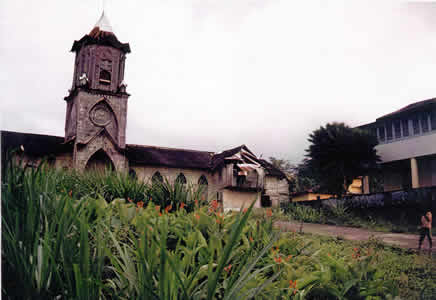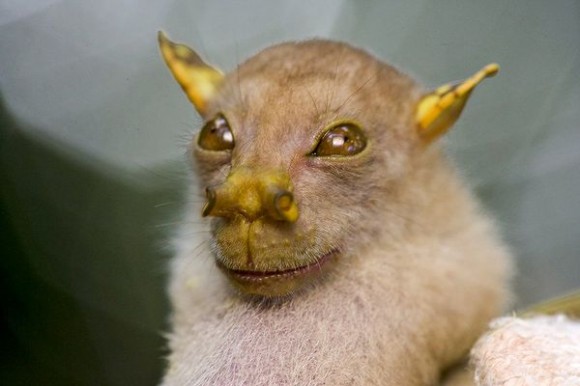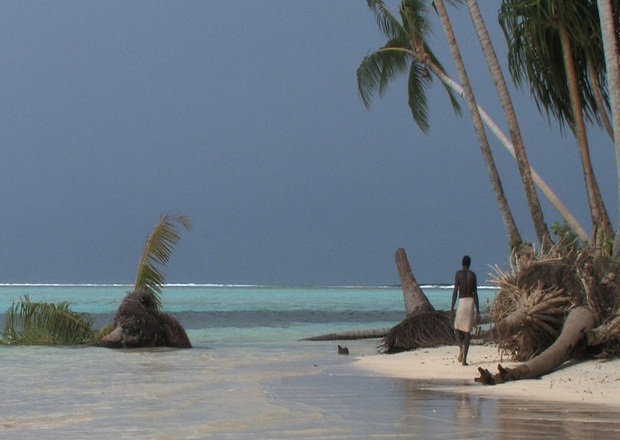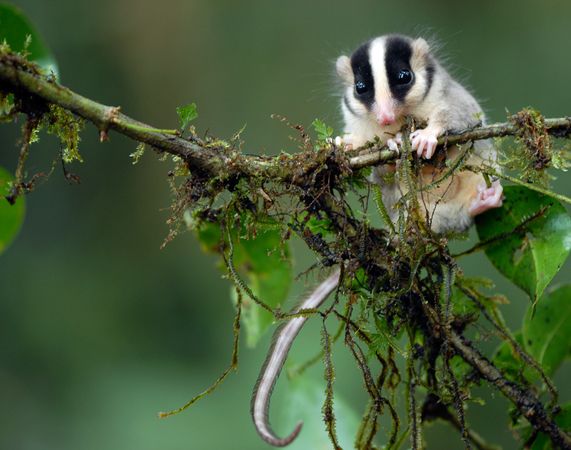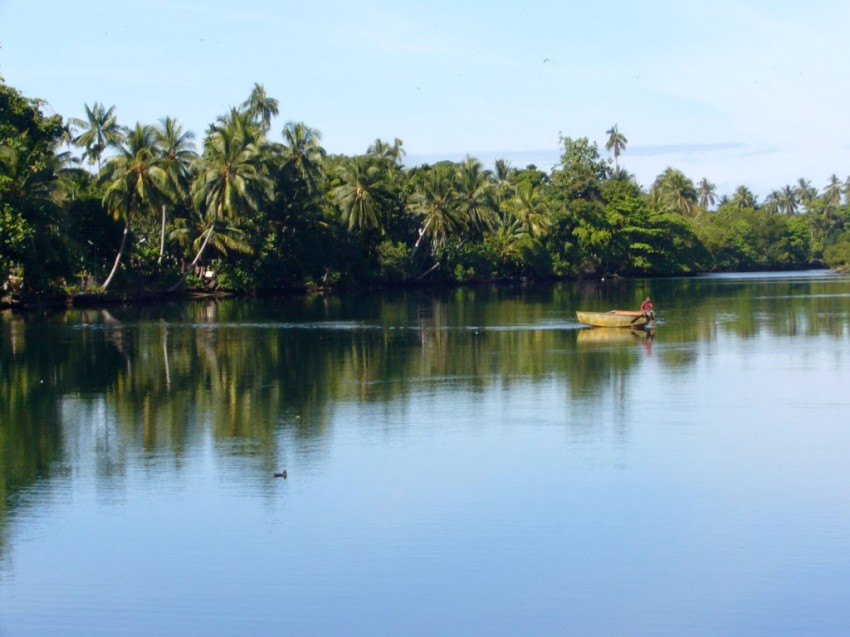PeopleAbout 10.2 million people call Guinea home. Most inhabitants reside in Conakry, the largest city which is also the capital, due in large part to its being the center of the country's economy, education and commerce.
Guinea's population comes from diverse racial and ethnic backgrounds. There are three major ethnic groups in the country out of about 25. The most dominant of these are the Fulani or Fula. The next two most important groups are the Mandinka or Mandingo and the Soussou. About 10% of the population is made up of other ethnic groups, immigrants and descendants of Europeans and Lebanese who came to the region |
Guinea is a rich country that hasn't quite reached its full potential. After many years of very little development and lackluster performance as a tourist destination, it has very slowly opened itself. The Republic of Guinea in West Africa is largely unnoticed by tourists, who prefer to visit the more famous destinations in the continent. In fact, the country receives just under 35,000 tourists each year. Most of its visitors come to Guinea for business, usually in the capital. It may be overlooked but it is definitely a must-see for people who prefer an adventurous trip. The allure of the country is untapped, yet for people who have dared to discover it, Guinea has managed to spring some very pleasant surprises along the way. It offers a taste of wild Africa mixed with distinct European influences, particularly French. Visitors love it for its music and live performances, being the home of the famous Circus Baobab and Les Ballet Africains. |
Geography
Guinea shares a border with Senegal and Mali. The western area faces the Atlantic coast. The land is shaped like a crescent, with the Niger River cutting through the country.
Climate is generally tropical monsoon, with distinct wet and dry seasons. The wet season is characterized by a good amount of precipitation, earning Guinea the reputation for being one of West Africa's wettest regions. In the capital of Conakry, for example, an average of 169 in. of rain falls each year. The rainy season begins in June and lasts till November and the dry season begins in December and ends in May.
Average temperatures range from a high of 31 and a low of 20 degrees Fahrenheit.
Climate is generally tropical monsoon, with distinct wet and dry seasons. The wet season is characterized by a good amount of precipitation, earning Guinea the reputation for being one of West Africa's wettest regions. In the capital of Conakry, for example, an average of 169 in. of rain falls each year. The rainy season begins in June and lasts till November and the dry season begins in December and ends in May.
Average temperatures range from a high of 31 and a low of 20 degrees Fahrenheit.
HistoryGuinea was once a part of the Ghana Empire. The empire was later defeated and the region came under the control the Mali Empire. By the time the Portuguese came to the region in the 15th century, the empire had already been dissolved due to internal warfare.
In 1890, France colonized Guinea and a capital city, Conakry, was established. Guinea became part of French West Africa. Guinea became independent in 1958, becoming the first of France's colonies to be so. Guinea came under dictatorial rule but free elections were later held. Political troubles continued, however, fueled by opposing factions, subsequent coup d'etat and civilian strikes. Due to the richness of its land, Guinea has been able to sustain its economy independently. Today, Guinea has yet to attain stability as a country. It is a promising source of bauxite, alumina, gold and diamonds and have been exporting its natural resources to the world. |
Famous Attraction
Many of the places of interest in Guinea can be found in its urban areas, particularly in the capital city. Some of its attractions are the National Museum, the Conakry Grand Mosque and the Palais du Peuple. The botanical garden is also a favorite spot for visitors, who come to marvel at the collection of plants and other vegetation native to the region.
There are also excellent stops in the many places where French influence is apparent. Much of the architecture in the area is French-inspired. The plazas, such as Place Grenoble, Place Victor Schoelcher and Place des Palmistes are also excellent spots. For shopping, there are several busy markets that sell local handicrafts and food.
For tourists who wish to experience the region's natural beauty, the Soumba Waterfalls and Iles de Los are ideal destinations. Swimming is allowed in the waterfalls and is always a great opportunity to grab.
There are also excellent stops in the many places where French influence is apparent. Much of the architecture in the area is French-inspired. The plazas, such as Place Grenoble, Place Victor Schoelcher and Place des Palmistes are also excellent spots. For shopping, there are several busy markets that sell local handicrafts and food.
For tourists who wish to experience the region's natural beauty, the Soumba Waterfalls and Iles de Los are ideal destinations. Swimming is allowed in the waterfalls and is always a great opportunity to grab.
NightlifeThe best bars and nightspots in Guinea can be found in the capital, Conakry. There are several night spots here that are quite popular among the locals, expats and tourists, including Atlantis at the Hotel Riviera Royal and Au Copains d'Abord, where live music goes quite well with the dining. Calebasse Plus is also an excellent nightspot for after hours drinks. For great jazz and local music, there's Fourchette Magique and Wakili Guinee. Wakili features local musicians playing traditional instruments three times a week. Another excellent place to go to for live performances is Palais du Peuple, frequently the venue of choice for some of the country's biggest acts.
|
Culture
Majority of the people in Guinea are Muslims. Only 10% are Christians, composed of Roman Catholics, Baptists, Anglicans, Seventh Day Adventists and Jehovah's Witnesses. A few Christians belong to Evangelical groups. Most Muslims are Sunnis while a small number are Shi'a. About 5% of the population practice indigenous religions.
Some inhabitants are also Hindus or Buddhists while a few practice traditional Chinese religions, particularly among immigrant groups.
Guinea is officially a French-speaking country. This is the language that's predominant in business, education and media. Other languages are also used here, such as Pular, Maninka, Insula, Kpelle, Kissi, Loma and Kissi.
Some inhabitants are also Hindus or Buddhists while a few practice traditional Chinese religions, particularly among immigrant groups.
Guinea is officially a French-speaking country. This is the language that's predominant in business, education and media. Other languages are also used here, such as Pular, Maninka, Insula, Kpelle, Kissi, Loma and Kissi.
CuisineThe cuisine in Guinea is a mix of French and African flavors with some European styles thrown in. Local Guinean food usually consists of jollof rice, a staple in most meals and fish. Chicken is also served, stuffed with groundnuts, along with maize soup. Local root crops such as yams and cassava are also eaten frequently.
Fresh fruit is also served, usually for snacks or dessert. Meals are usually ended with plain or sweetened fruit juices. Beer, particularly popular brands from West Africa, are also favorite beverages. Rice is often accompanied with sauces, usually made from manioc or sweet potato leaves, peanuts or soup extracts. Sauces may sometimes include chopped, dried fish. Street food is common in Guinea. A favorite is nono, a type of sour milk with millet formed into small balls, and black-eyed beans. The fish oil makes this dish quite tasty. Athieke is also served, a dish made from steamed and grated manioc mixed with oil and flavorings. |
Qunar

